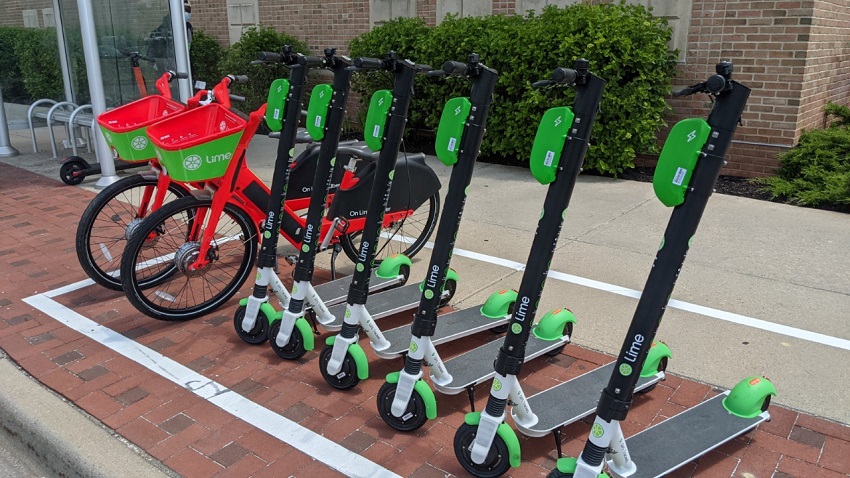Grand Rapids, Mich. — The Mobile GR Commission released new data this week, shedding light on the city’s transportation trends and growth. Notably, the Downtown Area Shuttle (DASH) and other transit options have experienced a significant rise in ridership, signaling a shift in the way Grand Rapidians navigate the city.
The DASH, which has undergone a service overhaul in recent months, reported a 105% increase in passengers in January 2025 compared to the same month in 2024. Overall, the shuttle system has seen an 85% rise in average monthly ridership since the beginning of 2024. Erin Evenhouse, Mobile GR’s Transportation Planning Supervisor, highlighted the changes, explaining that the service had transitioned from two buses running north-south and east-west to a single, more efficient circulator route. “We’re really excited that more people are discovering it,” Evenhouse said.
This boost in ridership reflects a broader trend of increased demand for alternative transportation options. In particular, micro-transit services have been filling the gaps in areas with less frequent bus service, less-traveled corridors, and off-hours travel. These options cater to individuals who may not have access to a personal vehicle, providing a flexible and efficient means of getting around. “For people who don’t have their own car, our options aren’t great,” Evenhouse acknowledged. “Being able to have a layered approach with different modes that people can take for different trip types… It’s important for us to support and facilitate those different options.”
In addition to traditional buses, e-scooters and e-bikes have become a growing presence in the city, thanks to Grand Rapids’ ongoing partnership with Lime. The San Francisco-based company provides the electric scooters and bikes at no cost to the city in exchange for the revenue they generate. Since the partnership began, the city has seen consistent growth in ridership each year, with year-over-year increases in the number of users.
To test the affordability of these options, News 8 took a ride on one of the Lime scooters in early March, covering a distance of 1.8 miles for a cost of $8.31 at full fare. This follows a pilot program conducted by Mobile GR last summer that offered free rides to qualifying individuals and reduced rates for some neighborhoods. The program was successful, with increased participation and no significant rise in safety incidents. Going forward, Mobile GR plans to continue offering reduced rates for qualifying groups.
Grand Rapids stands out for its affordability in this regard. According to Mobile GR, the city has the lowest rental rates for Lime scooters and bikes in North America, making it a cost-effective option for locals and visitors alike.
Safety remains a key priority for the city’s transportation initiatives. Mobile GR reported that 99% of trips ended within the contracted service area, and 95% of scooters and bikes were returned to designated drop zones. In cases where they weren’t, 92% of the time the vehicles were returned within 24 hours. Despite these positive figures, there were 216 safety incidents recorded in 2024, 55 of which resulted in moderate injuries or hospital visits. However, these incidents represent just 0.01% of all trips, suggesting a generally safe environment for riders.
The funding for these transportation programs is primarily derived from parking enforcement and payments. In 2024, Grand Rapids issued 82,482 parking tickets, with 45,805 of those related to downtown meter violations, making up roughly 12% of Mobile GR’s total revenue. Off-street parking, including garage and event parking, generated the bulk of the revenue, with garage and event parking contributing $21 million.
Recent research conducted by Mobile GR also looked into parking rates in comparable regional cities. The findings showed that Grand Rapids’ parking rates for garages, event parking, and meter enforcement hours were lower than those in similar cities. This information will help guide future decisions regarding parking pricing in the city, with an emphasis on keeping rates lower than private parking options while staying competitive with regional markets.
In conclusion, Grand Rapids is making significant strides in improving its transportation infrastructure, offering a wider range of affordable and accessible options for its residents. With continued growth in micro-transit, a robust e-scooter and e-bike program, and an emphasis on safety, the city is poised to meet the evolving needs of its community.







